Linux in 2012: what to expect
How will it all come together?
Ubuntu
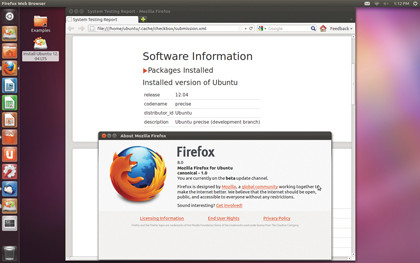
There will be two major Ubuntu releases in 2012 – Ubuntu 12.04, also known as Precise Pangolin, and the as-yet-unnamed 12.10 release in October. 12.04 is a long-term support (LTS) release and will be supported for five years.
At the Ubuntu Developer Summit for 12.04, Mark Shuttleworth shared plans for the Unity desktop on future Ubuntu releases that will extend to other devices, such as handsets, in a couple of years.
For now, you can expect even more quick-lists in Unity, with plans to add one for the Transmission torrent client, the Ubuntu oneCloud service, and for each app within LibreOffice. The Ubuntu Button will also have quicklists for lenses.
Expect the default Ubuntu installation to ship with more lenses, which will also be installable from the Ubuntu Software Centre. There were also discussions on how to equip Ubuntu with a calendaring app, which it lost when Gnome's Evolution was replaced by Mozilla'sThunderbird in 11.10.
Also expect a slicker LightDM display manager. Plans for doubling the size of the default ISO from 700MB to 1500MB were shelved, but the ISO for Ubuntu 12.04 will be 750MB. The developers plan to use the extra 50MB for accommodating apps and adding new Unity lenses.
Ubuntu will recommend the 64-bit version of the distro over the 32-bit version because of better support for installing apps of other architectures, thanks to the multiarch library. Support for booting Ubuntu on machines using the UEFI firmware has been added only to the 64-bit version.
Sign up for breaking news, reviews, opinion, top tech deals, and more.
Fedora
Fedora 17, dubbed Beefy Miracle, will be on the heels of Ubuntu 12.04. One of the less noticeable changes will be the inclusion of Btrfs as the default filesystem in Fedora releases.
Btrfs has several advantages over EXT4, and is better optimised for solid-state drives. According to Fedora developer Rahul Sundaram, switching to Btrfs as default will allow subsequent releases to take advantage of the filesystem's advanced features, such as its in-built volume management and RAID.
He points out that Fedora's package manager, yum, already has a plugin that uses snapshots of the filesystem to revert back to an earlier state in case of any issues with the newly-installed package. He adds that the plugin will likely become a default package in upcoming releases.
Sundaram also talks about plans to improve the AutoQA automated test system for Fedora. The developers want to extend it to the point where it will make it impossible to push a package that has dependency issues to the official Fedora repos.
Graphically, the first change that users will notice is a redesigned Anaconda installer. You'll also be able to experience the regular Gnome 3 desktop, regardless of whether your hardware supports accelerated graphics. This will also enable you to experience the Gnome 3 desktop from inside a virtual machine. This software rendering mechanism requires lots of CPU power, but expect optimisations before it appears on to a Fedora release in 2012.
OpenSUSE
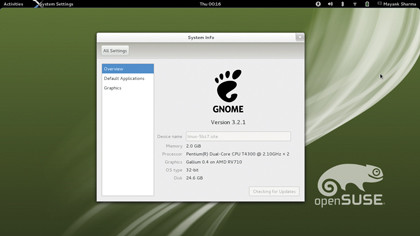
OpenSUSE is the only mainstream distribution that gives equal attention to all the popular desktop environments. Its last major release, OpenSUSE 12.1, was in Novemeber. Behind the scenes, the distro overhauled its boot process by switching to systemd.
The distro also experimented with Grub2, which wasn't enabled by default, because the developers felt it wasn't reliable enough. 12.1 shipped with Gnome 3.2 and KDE Plasma desktop 4.7, and included KDE's Calligra Suite.
The highlight of the distro was the Snapper tool, which relies on the Btrfs filesystem and allows you to view the differences between the current filesystem and any previous state, and roll back any changes that are causing trouble.
According to Andreas Jaeger, Program Manager for OpenSUSE, the focus of the distro in 2012 will be to expand their automated tests with openQA. He also expects the first OpenSUSE release with support for the ARM architecture.
One project Jaeger is looking forward to being integrated in OpenSUSE is the Project Bretzn app store.
Another major focus of OpenSUSE in 2012 will be the cloud. The ownCloud service, which debuted with 12.1, will be refined in 12.2. According to Community Manager Jos Poortvliet, "Some OpenSUSE people are involved in ownCloud and working on it as well as taking care of the integration in OpenSUSE, packaging and making it available as a SUSE Studio image for super-easy installation."
Debian
Until Debian 6.0, the distro was known for its release-when-it's-ready schedule. Despite its new time-based release policy every two years, there won't be anything in 2012. But you can expect the distro to enter feature freeze for Debian 7, codename Wheezy, sometime in the middle of 2012.
Since no new app will be allowed in the repos post the 2012 freeze date, don't expect the latest bleeding-edge software in the distro. But until that point, the developers will be regularly adding new software to Wheezy's repository.
Wheezy will be based on Linux kernel 3.0 and will have Gnome 3 and KDE 4.6 desktops. The developers are also working to remove old libraries, such as Qt3, from the distro, as well as introduce multiarch support.
At the annual Debian conference in 2011, longtime Debian developer Steve Langasek noted that multiarch will enable "better support for legacy 32-bit applications on new 64-bit installations, and in the future will even allow live migrations from 32-bit to 64-bit systems." Some of the other backend work involves fixing apps to remove arbitrary file size limits, such as in the audiofile library and the Brasero disc-burning app.
Work is underway to support IPv6 in all apps that support services over IPv4, such as the squid proxy server, asterisk VoIP and the TFTPD FTP server. The Debian installer is also being worked upon, and will get WPA support for netcfg in Wheezy.
Mageia
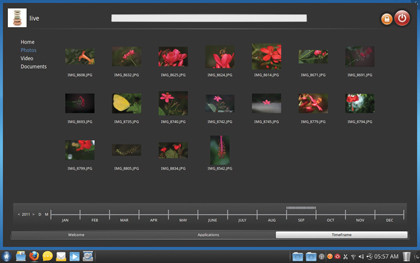
2011 was quite a year for Mageia. The distro had its first release within six months of breaking away from Mandriva, in June. Following the release of Mageia 1, the team announced its plans for Mageia 2.
The Mageia project aims to follow a nine month release cycle, and they originally planned to release the next version in April 2012; but it has been pushed back to May. In a blog post announcing the delay, Anne Nicolas, member of the Mageia founding team, said the developers plan to use the extra time to integrate the last stable versions of apps.
Since the first Alpha release was several weeks away while we were compiling this feature, there wasn't much detail available. But we know that Mageia 2 will be based on a release from the 3.x-series of the Linux kernel, and will offer Gnome 3.2 and KDE 4.7. The distro will not use Btrfs as the default filesystem, and discussions are taking place regarding switching to systemd and Grub2.
Linux Mint
2011 was exciting for everyone's favourite distribution. For the Linux Mint 11 release, the distro stuck with Gnome 2.32. In a blog post previewing the Linux Mint 12 release, Clement Lefebvre, the distro's founder and lead developer, acknowledged that "from a technological point of view, Gnome 3 is a fantastic desktop, and it's getting better with every new release."
This is why Linux Mint 12, codenamed Lisa, will be based on Gnome 3 desktop. The developers have been working to use Gnome 3 without losing the usability and workflow of previous Mint releases.
For this, the distro has adopted two strategies. One of them involves adding and enabling extensions on top of Gnome 3. You have the option to either enable all the extensions called Mint Gnome Shell Extensions (MGSE), or specific ones.
Lefebvre and his team are currently working with the developers of the Mate desktop environment, a fork of the Gnome 2 desktop. They're trying to iron out issues so they can include Gnome 3 and MATE on the DVD edition of Linux Mint 12. Lefebvre says that MGSE and Mate are only for Linux Mint 12, but will make their way into the Debianbased edition of Mint, LMDE. He can't give us a date for the release of Mint 12, but expects a Release Candidate by mid November.
Behind the scenes
Wayland
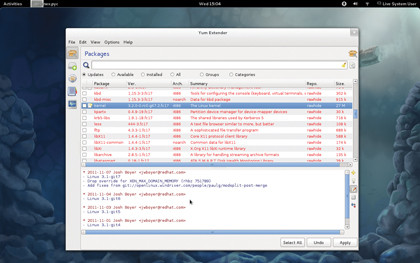
FUTURE OF LINUX: Distros such as Fedora's Rawhide let you take a look at upcoming apps and libraries
One of the buzzwords that peeked before every distribution's launch throughout the year and will continue to do so in 2012, is the Wayland display server.
Much of the excitement around Wayland stems from the fact that it aims to replace one of the core components of the Linux desktop – the X.org server. The advantage of Wayland is it's written from the ground-up to take advantage of the 3D functionality of the current graphic hardware.
This is in sharp contrast to the traditional X server, which was designed for non-compositing environments and handles 3D only through extensions. At the Desktop Summit in Berlin, Martin Gräßlin, the maintainer of KDE's KWin compositing window manager shared that KDE on Wayland should become a reality for those using Plasma Active in 2012.
The plan is to incrementally port KWin from X11 to Wayland. We can expect KWin to run directly on top of Wayland without X by the time KDE SC 4.9 arrives in the summer.
Also expect experimental support for Ubuntu's Unity powered by Wayland in 2012. Wayland is available in Ubuntu's Universe repository, but you might have to wait until October 2012 to use it in any official capacity, since the first Ubuntu release in 2012 is a LTS release. The Fedora camp will also use Wayland in place of X.
Qt
The year began with speculation after Nokia decided to drop Symbian and Meego operating systems for the Windows Phone OS. But fears about the future of the toolkit which doesn't (yet?) have a place in the Microsoft platform were put to rest when Nokia announced the Qt project to oversee the development of the popular toolkit.
All projects, including KDE, welcomed the move, as it allowed them an equal footing in contributing towards the future of the toolkit. Previous versions of the toolkit have been developed in-house in Nokia (and previously in Trolltech), who shared the results with the community.
Thanks to the new Open Governance model, development from Qt 5 onwards will be in the open from the get go. Perhaps the biggest news about Qt 5 is the straightforward transition from Qt 4. Discussing Qt 5 in a blog post, Lars Knoll, Director of R&D at Nokia, said the upgrade from Qt 4 to Qt 5 won't break source compatibility.
Qt 4.8 should be out soon. It will then be followed by Qt 5 later in 2012. Check out Graham's post on TuxRadar for more details.
GTK+
The other popular graphical toolkit also got its fair share of the limelight in 2011. Gtk+ 3 was released in February, and introduced changes that were incompatible with older releases. Major changes, such as a new API with CSS syntax, were considered pivotal to Gnome 3.0.
That release was followed up with Gtk+ 3.2 in September and added two new experimental backends, one for the Wayland display server and the Broadway backend, which allowed Gtk+ applications to run in the browser.
According to Allan Day, member of Gnome's UX design and marketing teams, discussions about Gtk+ 4 are already underway: "One of the main aims of Gtk+ 4 will be to bring the power of Clutter, which is used in Gnome Shell, to the rest of Gnome." There are also plans to improve the CSS syntax and equip it with its own style class.
Day tells us they'll be moving forward with these plans for Gtk+ in 2012.
Linux Kernel
The Linux kernel celebrated its 20th anniversary in 2011 with style. After 39 major releases and a development period that lasted longer than previous major series, Linus Torvalds tagged the first release candidate for Linux kernel 3.0 on the eve of Memorial Day in the US.
It was followed by v3.1 in late October, which included better support for Intel's Ivy Bridge and Cedar Trail chips, and also included a driver for the Nintendo Wiimote.
"In 2012, we should see open source GPU kernel drivers mature greatly as the final bits land for greater stability, feature-richness, and improving existing functionality," says Michael Larabel of Phoronix Media. He hopes that these new GPU drivers in the kernel have better power management and performance, support for more hardware, and will be able to handle apps written in OpenCL (Open Computing Language).
Larabel hopes that support for the ARM architecture in the Linux kernel will take shape in 2012, along with more hardware vendors pushing their open-source Linux drivers into the mainline kernel. "More and more ARM vendors are understanding the need to co-operate with the upstream Linux kernel developers, and the value of providing mainline support for their devices."
Major developments on the way
Will Windows 8 boot-out Linux?
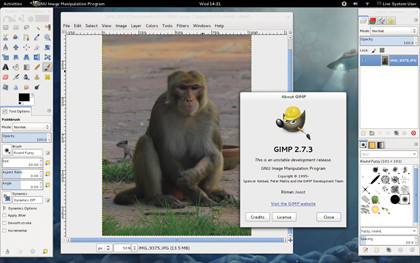
NEW GIMP: Starting with GIMP 2.10 new features will be developed in separate feature branches
Microsoft ruffled a few feathers in the Linux community when it announced its plans for "re-engineering the Windows boot experience". The plan revolved around tapping the security benefits of the secure boot procedure for firmware in devices.
It's part of the Unified Extensible Firmware Interface (UEFI) specification, which is already used in all ARM-based processors. Now, although as per the UEFI spec, secure boot is optional to use, Microsoft wants system vendors to enable it by default if they want the Windows 8 logo on the hardware.
Linux wizards argue that secure boot might prevent users from installing Linux on Windows 8 machines. The FSF dubbed the technology "restricted boot" if its implementation hinders installing other operating systems.
Two detailed papers, one from the Linux Foundation and one jointly by Red Hat and Canonical, suggested ways for implementing secure boot in a way that allows the hardware owner to be in control. Microsoft's last blog post on the subject was dismissed by Red Hat's developer Matthew Garrett as "factually accurate but misleading". Microsoft's Corporate Vice President Dan'l Lewi has hinted at an Autumn 2012 release.
Another year, another mobile OS
Nokia's deal with Microsoft for Windows Phone 7 began to unravel the much-hyped MeeGo project. This led Intel to join with the Linux Foundation to replace MeeGo with the Tizen mobile operating system. The other big players are the LiMo Foundation and Samsung – one of the first mainstream companies to ship a MeeGo netbook.
But Tizen is more than MeeGo rebranded. According to Intel's Imad Sousou, they couldn't have worked on MeeGo to meet Tizen's technical requirements.
"We believe the future belongs to HTML5-based applications, and we're convinced that our investment needs to shift toward HTML5. Shifting to HTML5 doesn't just mean slapping a web runtime on an existing Linux, even one aimed at mobile, as MeeGo has been," he wrote on the MeeGo blog.
Expect the release of Tizen early in 2012.
Mozilla sticks its foot in the door
Another vendor making moves into the mobile space is Mozilla. With its Boot to Gecko project, it wants to build a complete operating system for handheld devices.
Mozilla argues that the current mobile landscape is heavily fragmented by the lack of interoperability between each of the siloed platforms. It wants B2G to be an alternative to the single-vendor application development stacks offered by the dominant mobile operating systems.
The project is currently using some code from Android "for hardware enablement purposes". On top of this, it will build a custom user interface and an application stack around Gecko. Mozilla has made it clear that it uses Android only because it offers compatibility with existing hardware, and will not use Android's Java-based environment, nor will it support programming in native code.
Mozilla hopes to demo B2G in the first quarter of 2012 and productise it later in the year.
An OpenOffice release?
After OpenOffice.org was abandoned by its new corporate owners, Oracle, the impetus shifted to a re-branded fork called LibreOffice, developed by former members of the OpenOffice.org community under the banner of Document Foundation.
As the Document Foundation celebrated its first year, Oracle was transferring the ownership and trademarks of OpenOffice. org to the Apache Foundation. "OpenOffice is a large project by Apache standards," says Donald Harbison, member of the Podling Project Management Committee (PPMC) for Apache OpenOffice.
Harbison said an Apache OpenOffice 3.4 release is likely in several months. While the initial release will focus on completing the work started by Oracle, plans for the 4.0 release include "improvements in the UI, and MS Office interoperability, greater platform and language coverage, and support for new standards."

With almost two decades of writing and reporting on Linux, Mayank Sharma would like everyone to think he’s TechRadar Pro’s expert on the topic. Of course, he’s just as interested in other computing topics, particularly cybersecurity, cloud, containers, and coding.